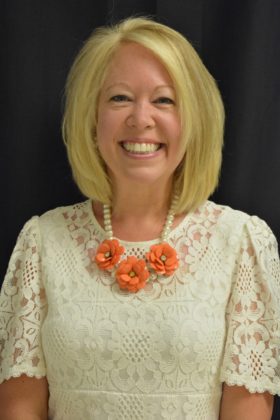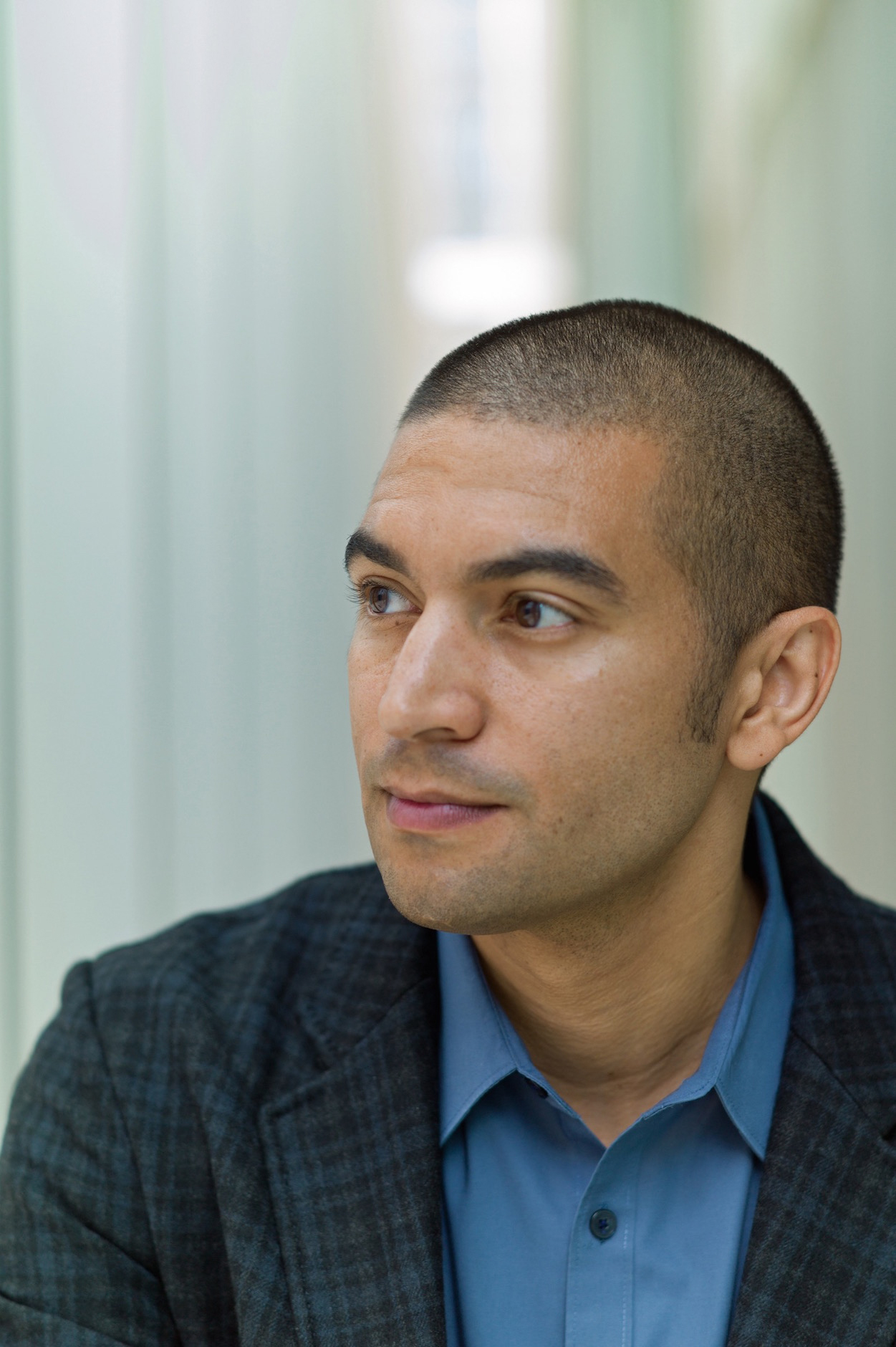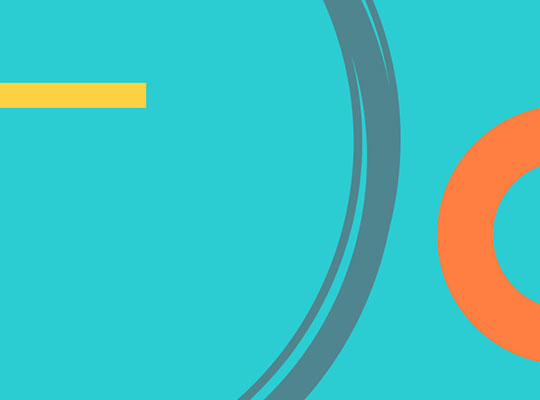National Poetry Month 2018: 5 Questions with Lisa Laker
April 30, 2018Lisa Laker teaches English at Franklin Central High School. She founded a creative writing club and sponsors the Student Council and Academic Team at Franklin. She is a lifelong Hoosier with 22…
 Lisa Laker teaches English at Franklin Central High School. She founded a creative writing club and sponsors the Student Council and Academic Team at Franklin. She is a lifelong Hoosier with 22 years of teaching experience.
Lisa Laker teaches English at Franklin Central High School. She founded a creative writing club and sponsors the Student Council and Academic Team at Franklin. She is a lifelong Hoosier with 22 years of teaching experience.
Adrian Matejka: Thanks for taking the time to respond to some questions about American poetry, Lisa! I know your teaching and the poetry club at Franklin Central are incredibly time intensive. Add that to your scholarly work about Emily Dickinson and your various creative projects and it’s a wonder that you have any time to write your own poems. So let’s start with some history. Unlike England, France, or some of the other Western countries, the history of poetry in the United States is fairly young. Can you talk a little bit about the beginnings of poetry in the U.S.? Who do you see as the original superstar poets?
Lisa Laker: Adrian, thank you for taking the time to dig into poetry from a high school teacher’s point of view! I am totally stealing your phrase of “superstar poets” tomorrow in class. My votes go to Emily Dickinson and Walt Whitman. As I grow as a teacher, I might cast a few more. Last week, I got really animated over the phrase “barbaric yawp” in a lesson on Whitman paired with modern US poet Richard Blanco’s “One Today.” I’m pretty sure my students thought I was nuts. I’m not sure if Whitman and Dickinson are “old” enough poets to be the root of the US tradition, but they are what it’s all about to me!
AM: Emily Dickinson is one of my favorites! Her poems are full of tremendous music. What drew you to her work? What is makes her poetry so special?
LL: During my own schooling, I was always intrigued and scared by Emily Dickinson’s poems. Why so many dashes?! Why is she so fascinated by death? How can her poems be so short, yet packed with layers? Last summer, I had the opportunity to be a National Endowment for the Humanities Emily Dickinson Summer Scholar at Amherst College; the foremost experts of Dickinson presided over a glorious week of all-things-Emily. Her complexity was validated; for example, she constantly worked with words, phrases, drafting and re-drafting—even decades later—changing the poems’ meanings over time as her own life’s philosophy shifted. It made her more vulnerable to me, and I love her even more because of it! Side note: I learned she was a practiced pianist, so the musicality of her poetry you gravitate towards is definitely ever-present in those 1,800 poems.
AM: I mentioned that American poetry history is fairly short, but a lot has changed since Dickinson was writing her poems. But it has also changed significantly since in the past 20 years. What kinds of changes have you seen in poetry (I’m thinking about the poems themselves here) since you started teaching? What kinds of changes if any have seen in the way that students respond to poetry?
LL: When I graduated in the 90’s, Dien Cau Dau by Yusef Komunyakaa was the modern poetry I gravitated towards in my teaching. In fact, I still do a model lesson on “Facing It,” and a student this year was honored at the Purdue Literary Awards after writing a poem inspired by it! I believe poetry today is more accessible and circulated by teens because of social media. My students really connect with the work of Rupi Kaur and young slam poets like Harry Baker (“A love poem for lonely prime numbers“) and Marshall Davis Jones (“Touchscreen“). They can see it on their Twitter feeds, and they can immediately respond to the poetry.
This winter, our Creative Writing Club curated an “Emily Dickinson Exhibit” and program that was very successful. My creative writing students chose a Dickinson poem of choice and responded to it in an effort to bridge Emily from then to now. It just so happened it was two days after the Stoneman Douglas High School school shootings, and my students made unbelievable connections to Dickinson’s “Because I could not stop for death” and what was happening in their world. It was very moving! So, I believe that students today feel empowered by poetry.
AM: You are a writer in addition to being a scholar of poetry. How did you start writing poems? What drew you to poetry?
LL: I am an educator who writes with her students. My students are my role models. I learn from their experiences, their insights, and their talents. I feel inspired by their willingness to “just try out” the style of a model poet like Sylvia Plath (“Daddy‘s” ooo sounds) and come up with something pretty worthwhile on the spot! Carpe Diem in action! I started writing during my adolescence as a creative outlet when my Mom was diagnosed with breast cancer, and I will continue to use poetry as a way to connect with my students and push myself as a writer and teacher.
I am drawn to any and all poetic experiences. Last fall, I spent a weekend in Chicago at the Poetry Foundation and learned all about the ancient Korean poetic form, sijo. The weekend ended with specially commissioned performances of the ancient poems via piano, a classical quartet, and even rap…my poetic world opened a little wider. It stretched me. This summer, I am spending a week at the Poetry Foundation which both excites and terrifies me as a writer. I am also spending a week at Yale as a Gilder Lehrman Frederick Douglass Teacher Fellow, and I am so excited to tie his important slave narratives into a unit with US Poet Laureate’s Tracy K. Smith’s new poetry book, Wade in the Water—this will be a cross-genre approach that I hope will really generate high-student interest!
AM: The last question is probably the toughest: who are your favorite poets/poems to share with your students? What about those particular poems work well?
LL: Poet goddess of all time: Maya Angelou! “Still I Rise” wins my March Madness poetry bracket every year. If I could pick a fairy godmother of poetry and writing, it would be Dr. Angelou.
Poet god of all time: Langston Hughes! I feel like he’s talking to me in “Theme for English B.” He’s telling me: You’re the teacher, and you need to be aware of your students, their backgrounds, their experiences. Embrace all! Uplift!
Truly Adrian, your Big Smoke about the life of boxer Jack Johnson is my #1 go-to with students. You really did your research on him, and your writing is so well-crafted. I’d love to hear more about how you teach meter. Your ability to show a complex man in a complex time gives students so many ways to connect. They love Jack Johnson—they hate Jack Johnson, yet they realize his voice is authentic. As a teacher of poetry, there are so many skills there I can work with in order to explore my students’ own voice in writing. What they write after studying your poetry is remarkable, so thank you!
Pieces of a Poet
A Teacher-Student Collaboration
By Lisa Laker & Katelyn Coldiron
Ink and paper can mend. Ink and paper seem fragile
Ink and paper can heal. as I search for pieces of myself,
I can’t help but wonder
how many times can
a china plate-heart shatter?
Angelou literally found her voice
within poetry.
Let these strong women writers
before you be your guide:
Cisnernos, Plath, Kaur.
Lost in a whirlwind world,
The words start to pour out.
I’m shaking.
I’m a coward,
guarded by their bullet-proof books.
I am not strong enough to be those women.
They say there’s
strength in being
Yourself.
I’m already in pieces.
Build a mosaic of So are mosaics.
Yourself from them. They’re beautiful. Can I have a piece of that
beauty, too?
I will write myself into their light
Cast your colors. casting my colors
across the room.
I find pieces of myself in
shards and colors
shoes to fill
ink and paper.
Katelyn Coldiron is an aspiring writer and a senior at Franklin Central High School in Indianapolis, Indiana. During her time in creative writing class, Katelyn grew confident with her writer’s voice. Her honest observations about life shine through, and she was a natural choice for Mrs. Laker to work with on a poem over donuts and gas station coffee one April Friday before school! Mrs. Laker is thrilled to see where the next phase of Katelyn’s life will take her writing, and she plans to be front-row-center when Katelyn wins her first Pulitzer!
Indiana Humanities is celebrating National Poetry Month in collaboration with Indiana Poet Laureate Adrian Matejka. We’ll be sharing interviews with Indiana poets, discussion on poetic form and other poetry. See the full span on National Poetry Month posts here.  Adrian Matejka is the Indiana Poet Laureate and is the author of The Big Smoke, Map to the Stars and many other works.
Adrian Matejka is the Indiana Poet Laureate and is the author of The Big Smoke, Map to the Stars and many other works.

